The template will be copied to my project. Click on the title in the red frame to transition to the settings screen.
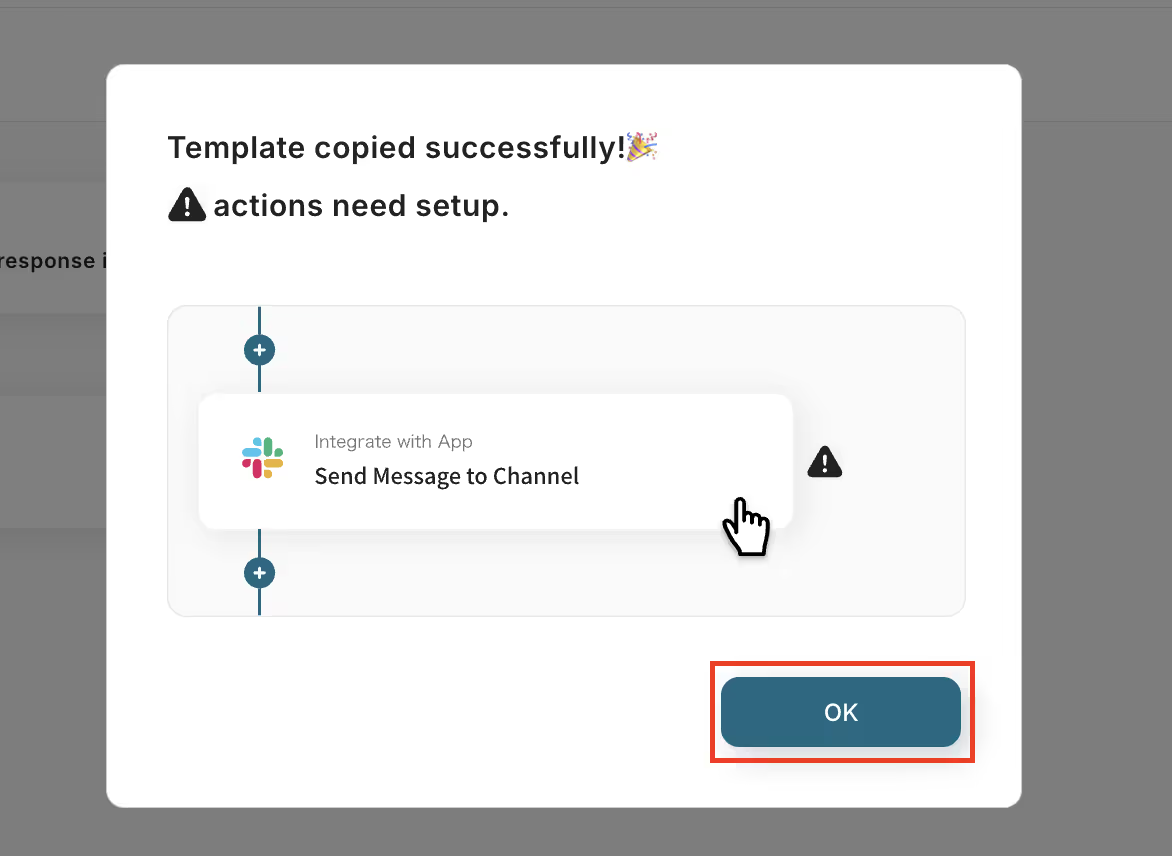
There are multiple processes, but we will use the output obtained from each process to acquire the content to be notified on Slack.
Step 3 App Trigger "When the Meeting Ends"
Click on the first process of the template. Here, we will obtain the recording information.
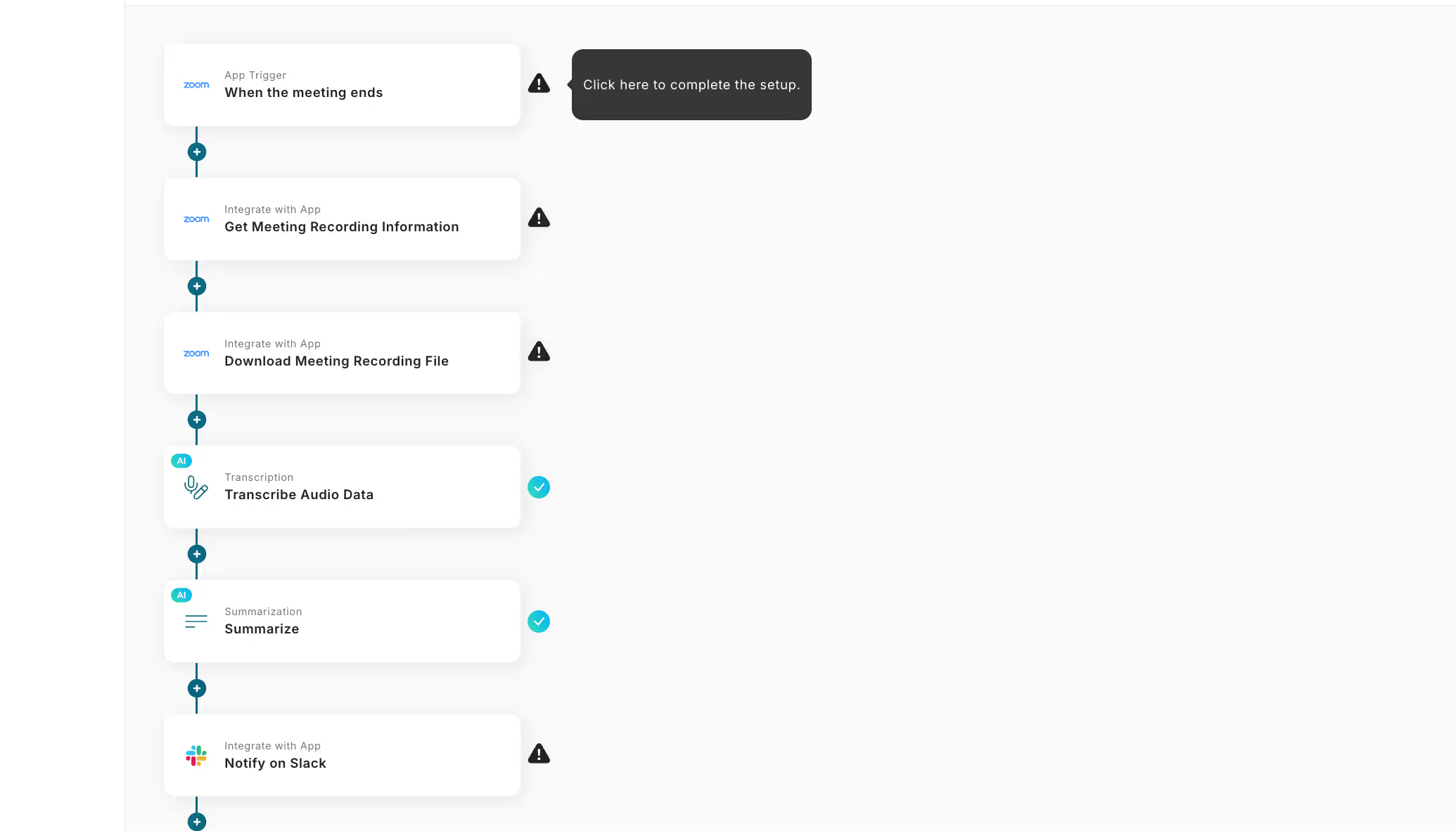
(1/2) Select Linked Account and Action
The items displayed here are pre-configured.
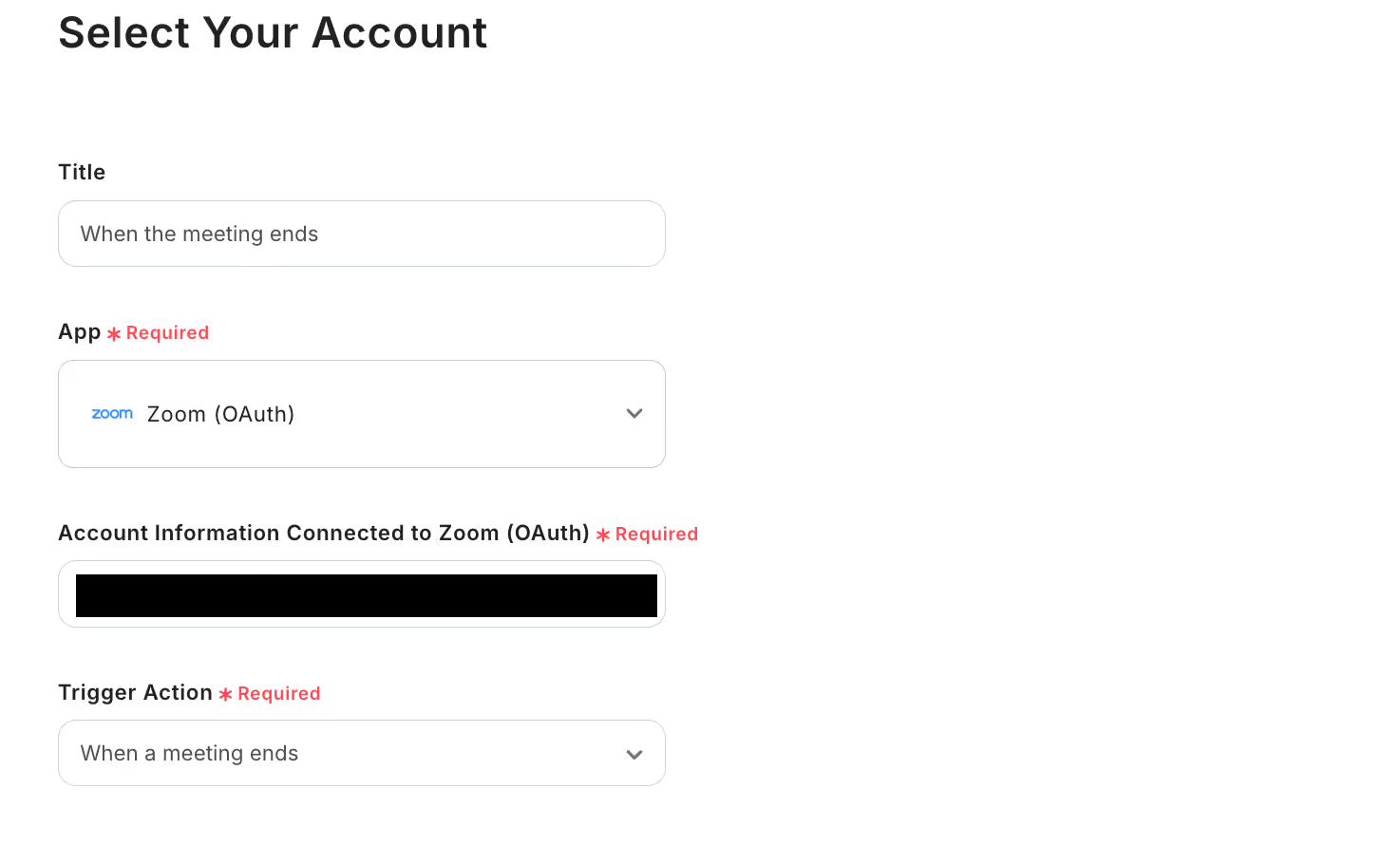
- Title
- App
- Account Information Connected to Zoom(OAuth)
- Trigger Action
→ Click Next
(2/2) API Connection Settings for App Trigger
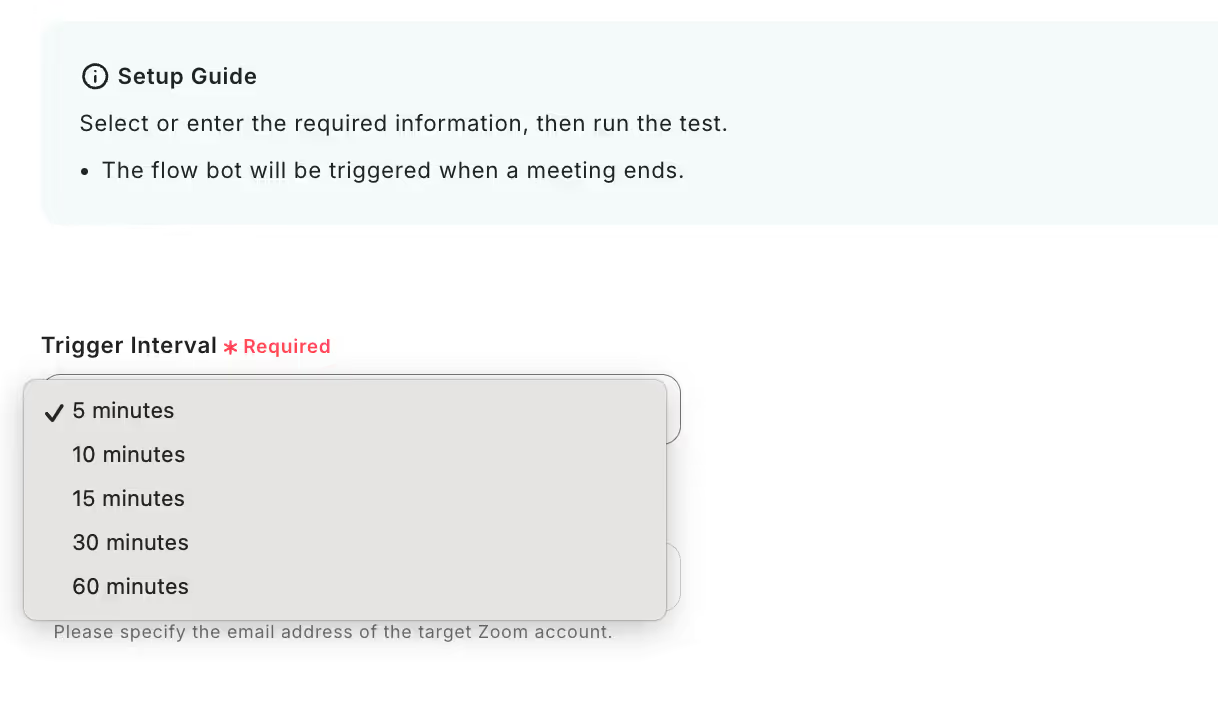
- Trigger Activation Interval
- You can choose from 5 minutes, 10 minutes, 15 minutes, 30 minutes, or 60 minutes.
- Email Address
- Please enter the email address registered with Zoom
→ Click Test → Success The output has been obtained here.

→ Click Save
Step 4 Integrate with App "Obtain Meeting Recording Information"
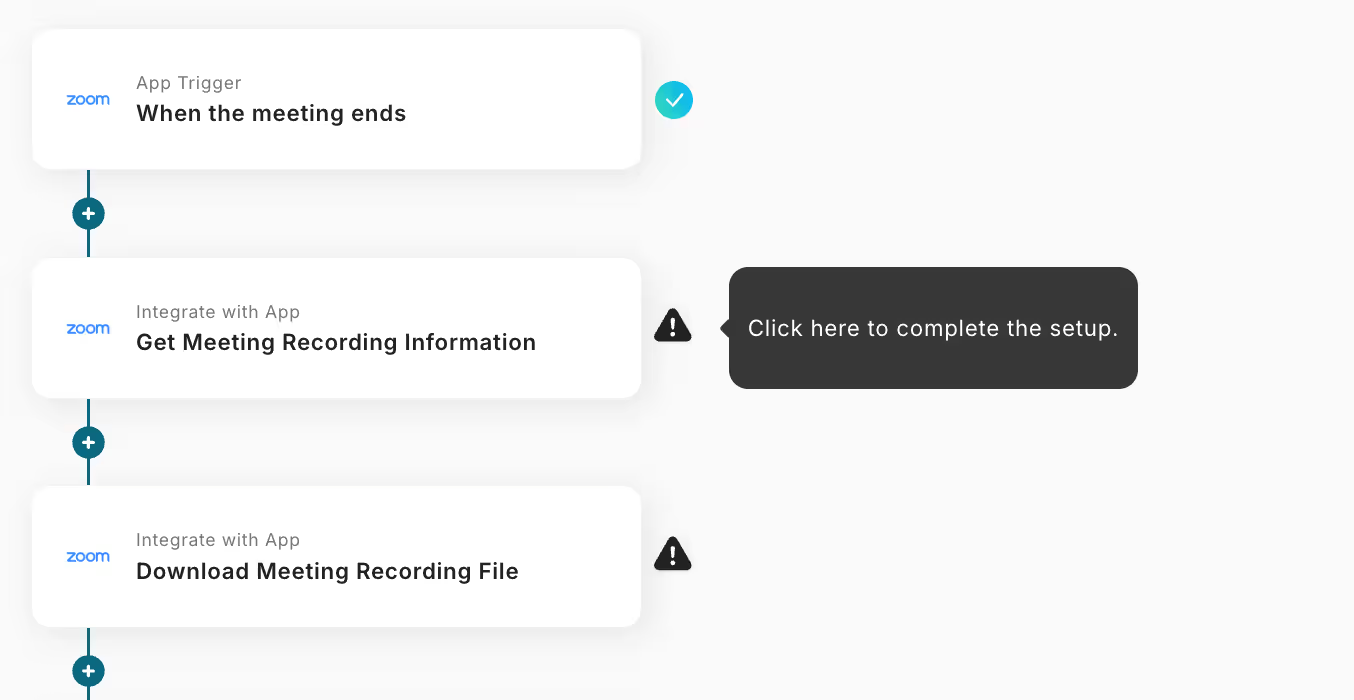
Click on the second process of the template. Here, we will set up to obtain information extracted from Zoom.
(1/2) Select Linked Account and Action
Since it is already configured, proceed to the next step.
→ Click Next
(2/2) Select Linked Account and Action

- Meeting ID
- Since the quote code is pre-embedded, no operation is required.
→ Click Test → Success The output can obtain detailed meeting information.
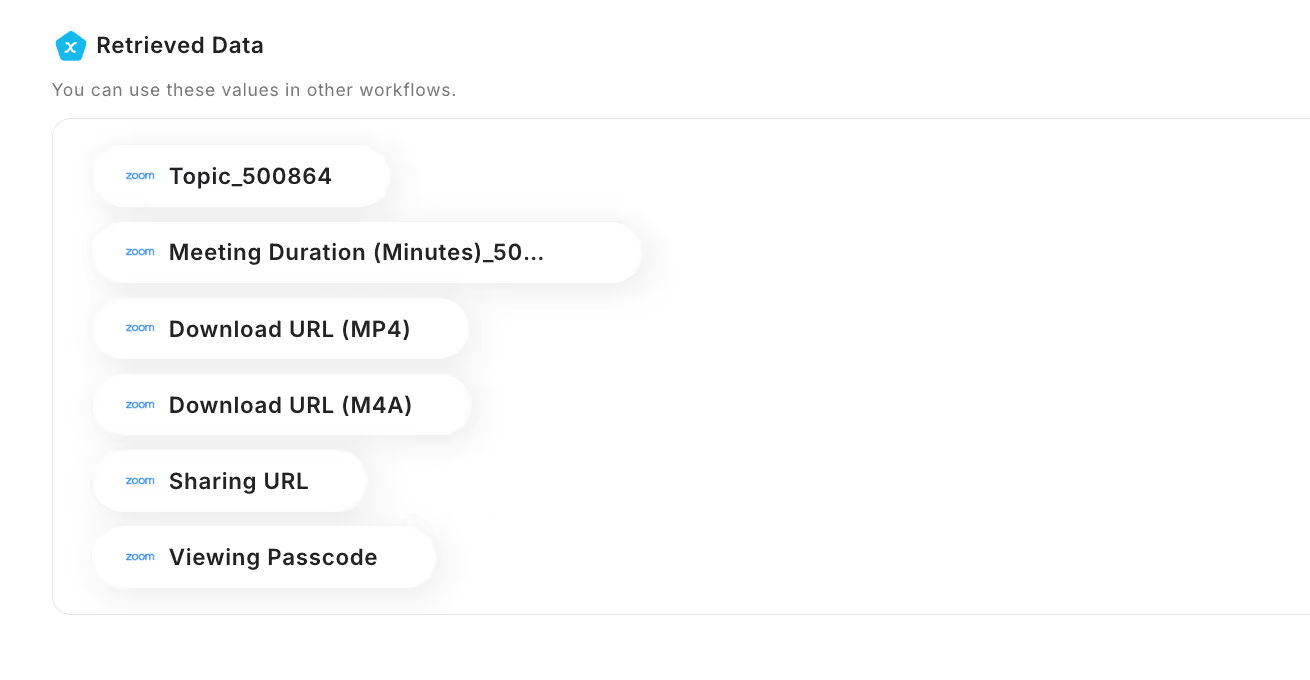
→ Click Save
Step 5 Integrate with App "Download Meeting Recording File"
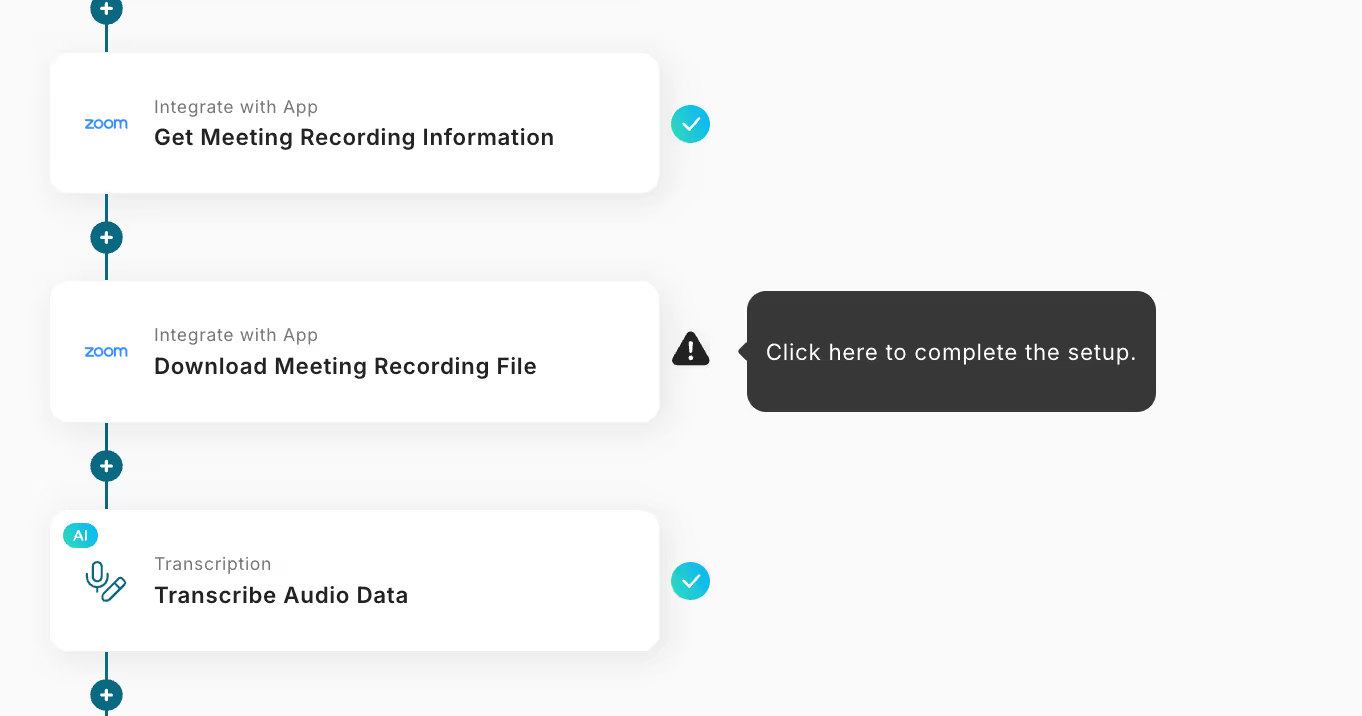
Click on the third template! In this process, we will set up to download the meeting file.
(1/2) Select Linked Account and Action
Since it is already configured, proceed to the next step.
→ Click Next
(2/2) API Connection Settings
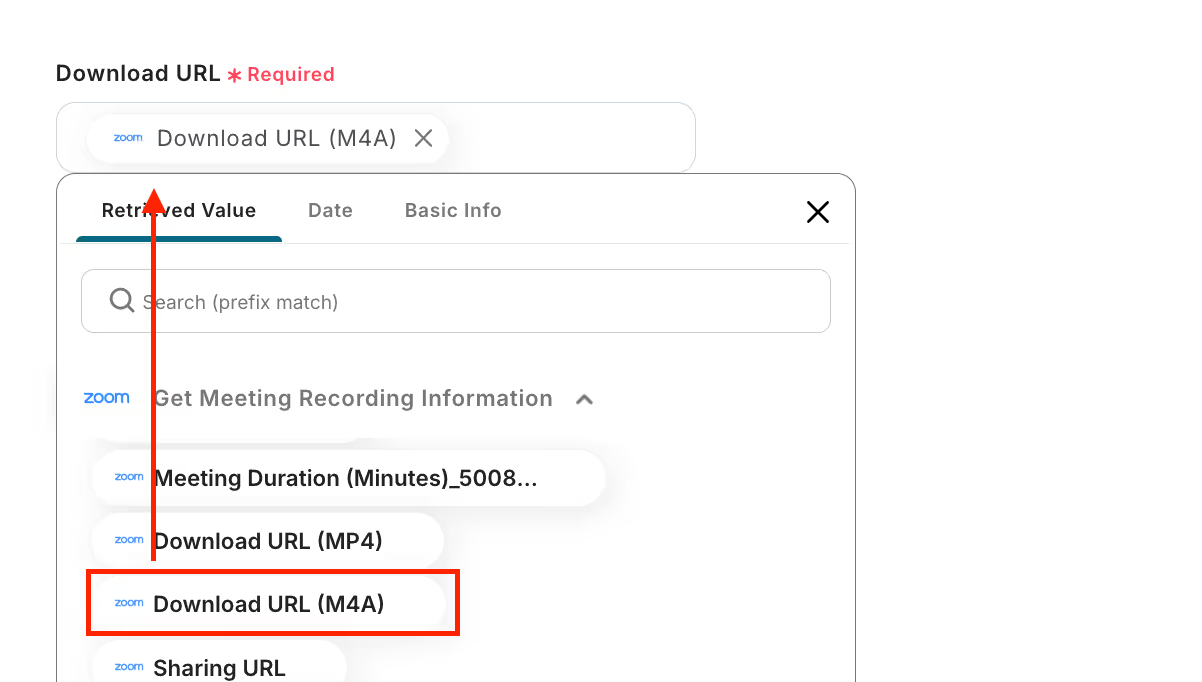
- Download URL
- Embed the URL obtained in the previous process. Since the code is pre-embedded, no setup is required.
→ Click Test → Success The output can obtain the downloaded file.
→ Click Save
Step 6 Transcribe Audio Data

Click on the fourth process. Although it is displayed as configured, there are necessary settings to confirm.
(1/2) Select Action
- Title
- "Transcribe Audio Data" is configured.
- Action
- Select according to the length of the meeting time.

→ Click Next
(2/2) Set Details
- File Attachment Method
- Since the file is downloaded in the previous settings, use that value. Please select "Downloaded File" from the dropdown.
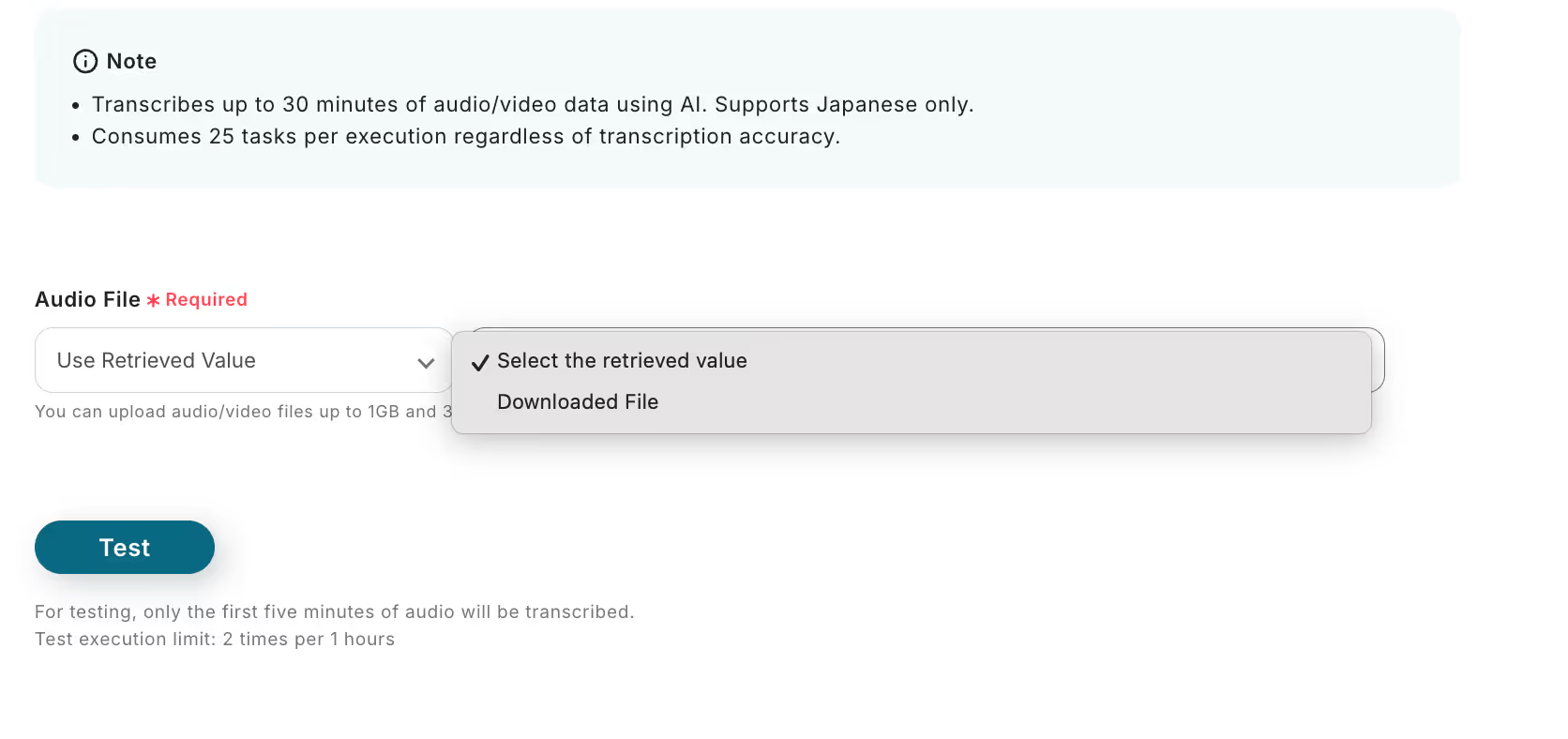
→ Click Test → Success The output can obtain the analysis results.
→ Click Save
Step 7 Summarize

Click on the fifth process. Although it is displayed as configured, there are necessary settings to confirm.
(1/2) Select Action
- Title
- "Summarize" is configured.
- Action
- Select according to the volume of text.
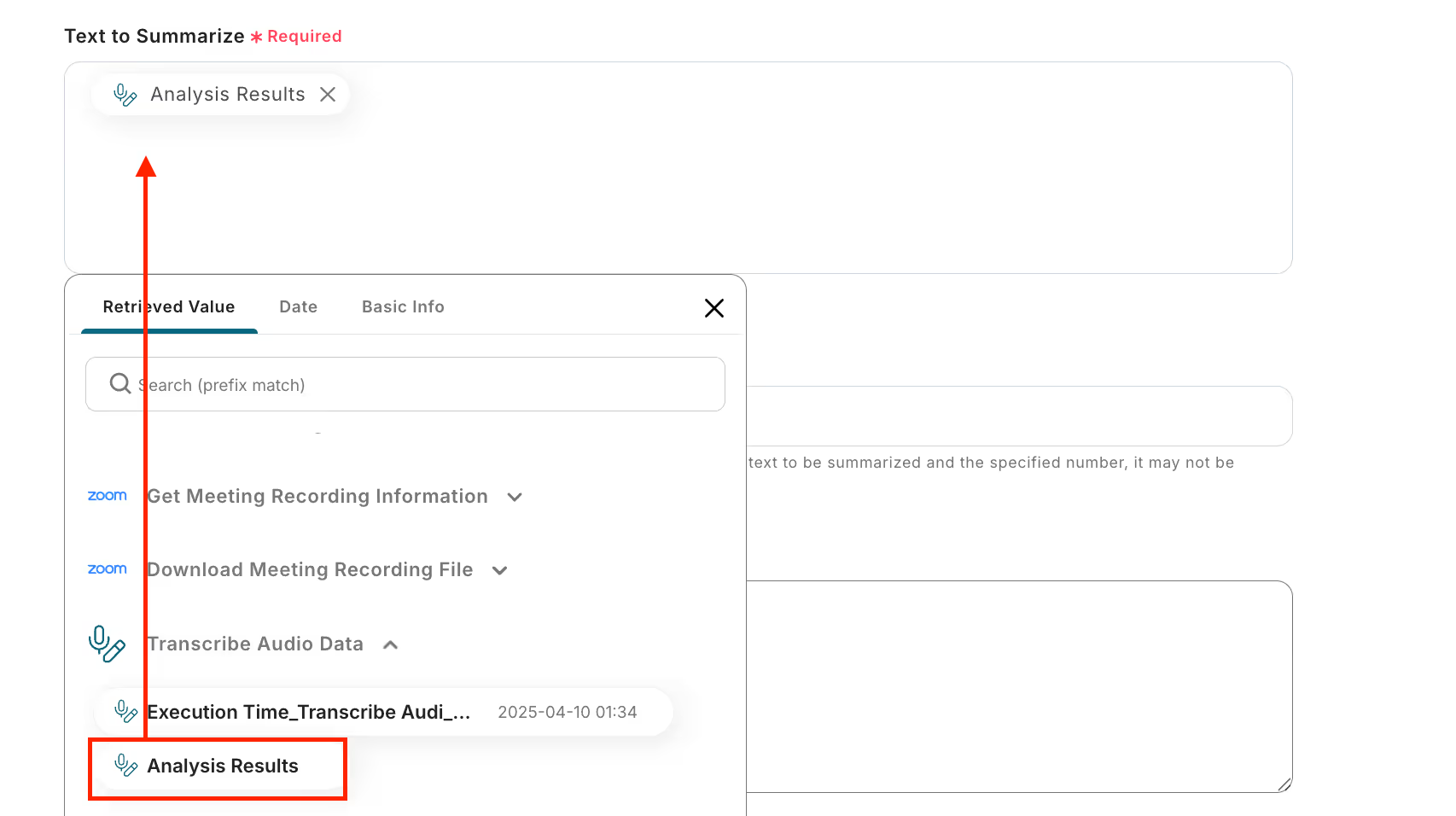
→ Click Next
(2/2) Set Details
Set using the analysis results obtained in the previous process.
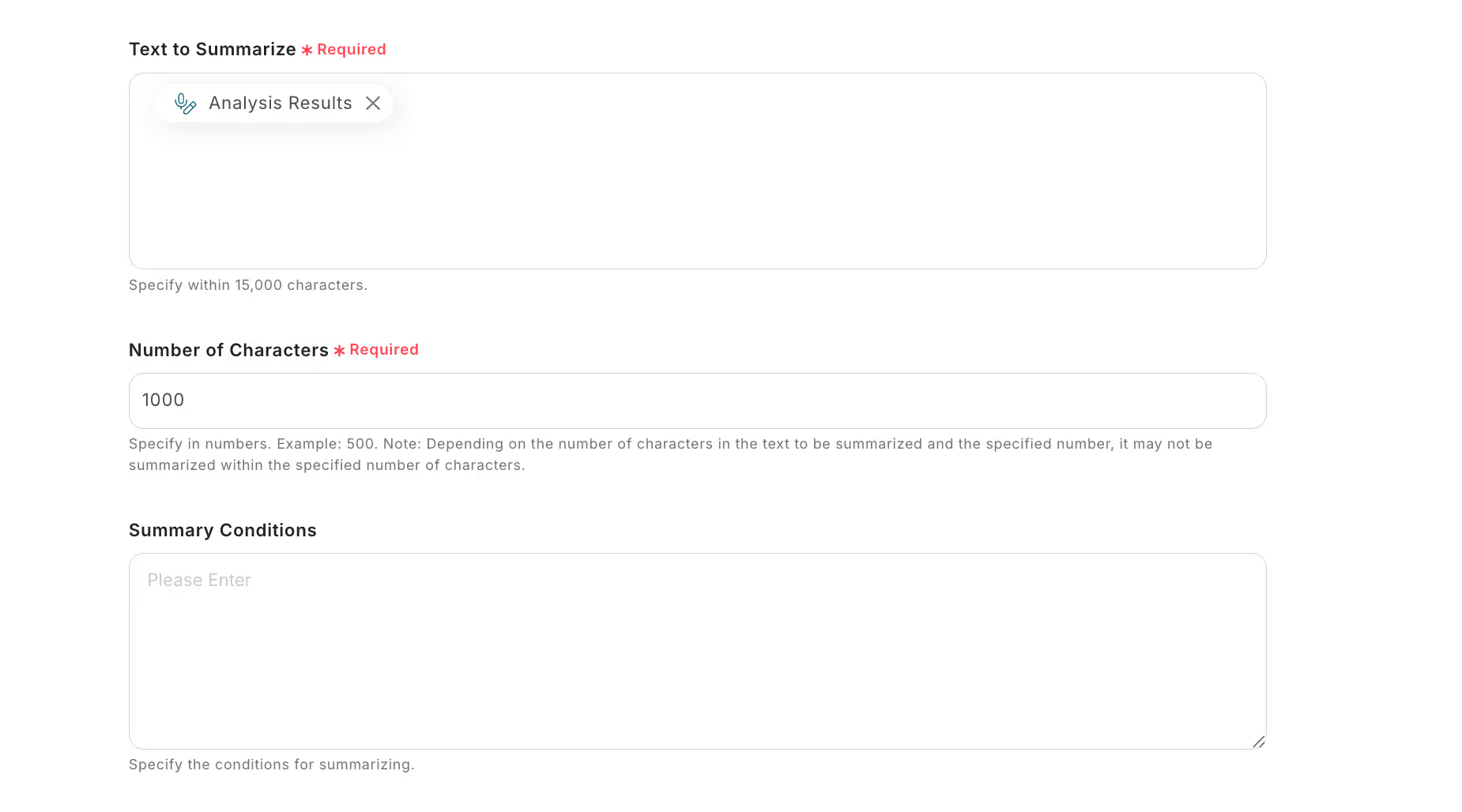
- Text to Summarize
- The quote code of the analysis result is pre-embedded.
- Number of Characters
- It is pre-set to 1000. Please set it based on the number of characters in the analysis result. Although the specified number of characters is instructed to the AI, the final decision is made by the AI, so the summary may not match the specified number of characters.
- ※ Please note that there is a possibility of a significant reduction from the specified number of characters.
- Summary Conditions
- You can instruct the AI by entering "more concise" or similar.
→ Click Test → Success The output can obtain the summary results.
→ Click Save
Step 8 Integrate with App "Notify on Slack"
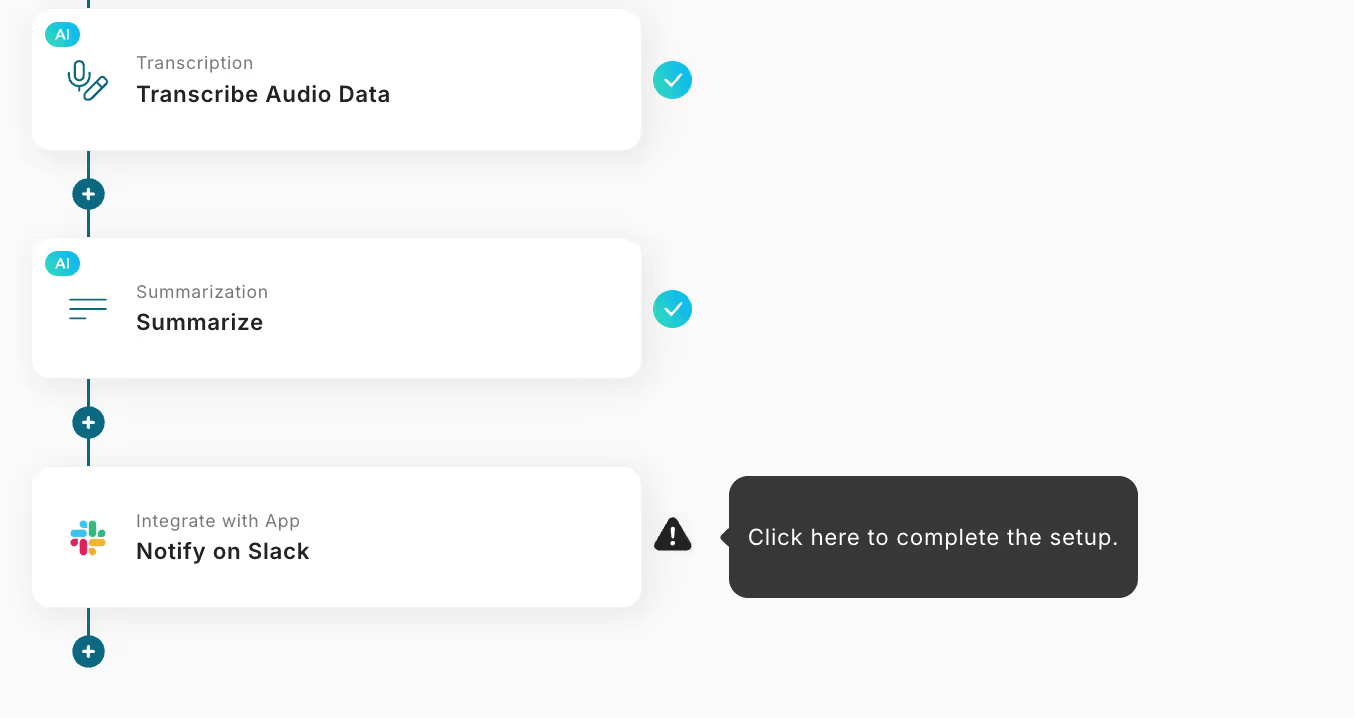
Click on the sixth process. Here, we will set up the content to be notified on Slack.
(1/2) Select Linked Account and Action
The displayed items are pre-configured.
- App Trigger Title
- App
- Account Information Linked with Slack
- Trigger Action
→ Click Next
(2/2) API Connection Settings
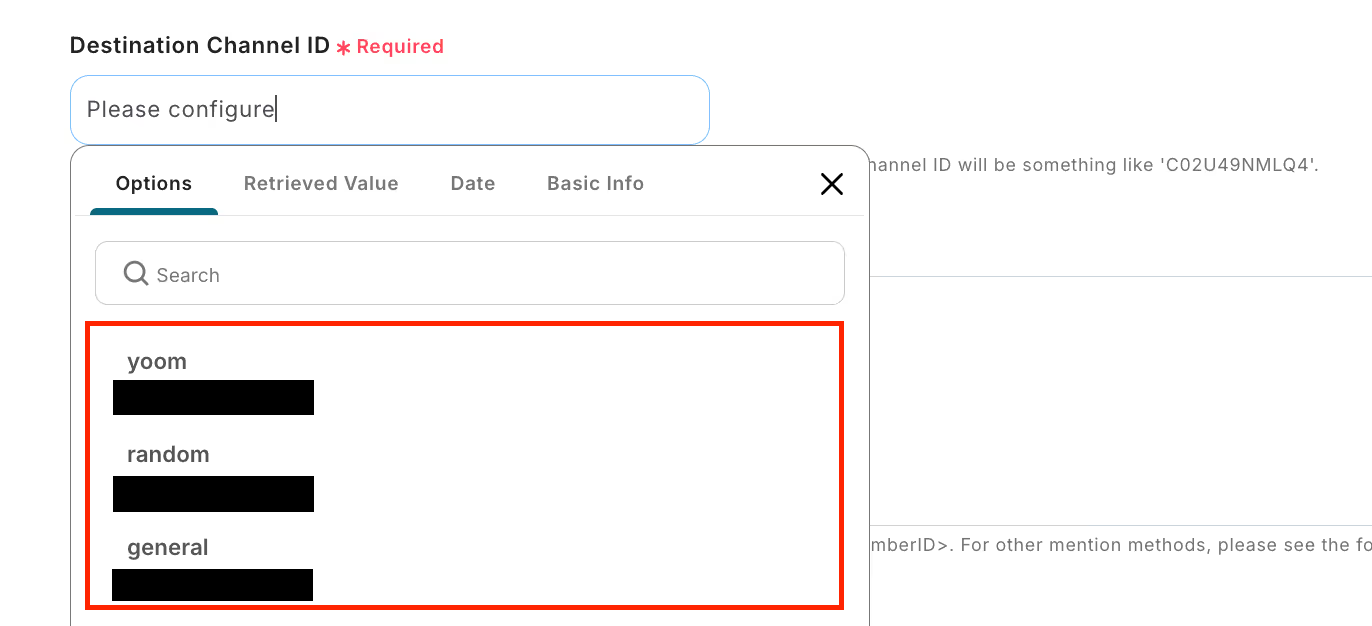
- Destination Channel ID
- Click the edit field to open a dropdown, and Slack channels will be picked up. Select the channel to send notifications to, and the quote code will be embedded.
- Message
- Click the edit field to display the list of obtained outputs. Let's create a template message while quoting the obtained outputs.
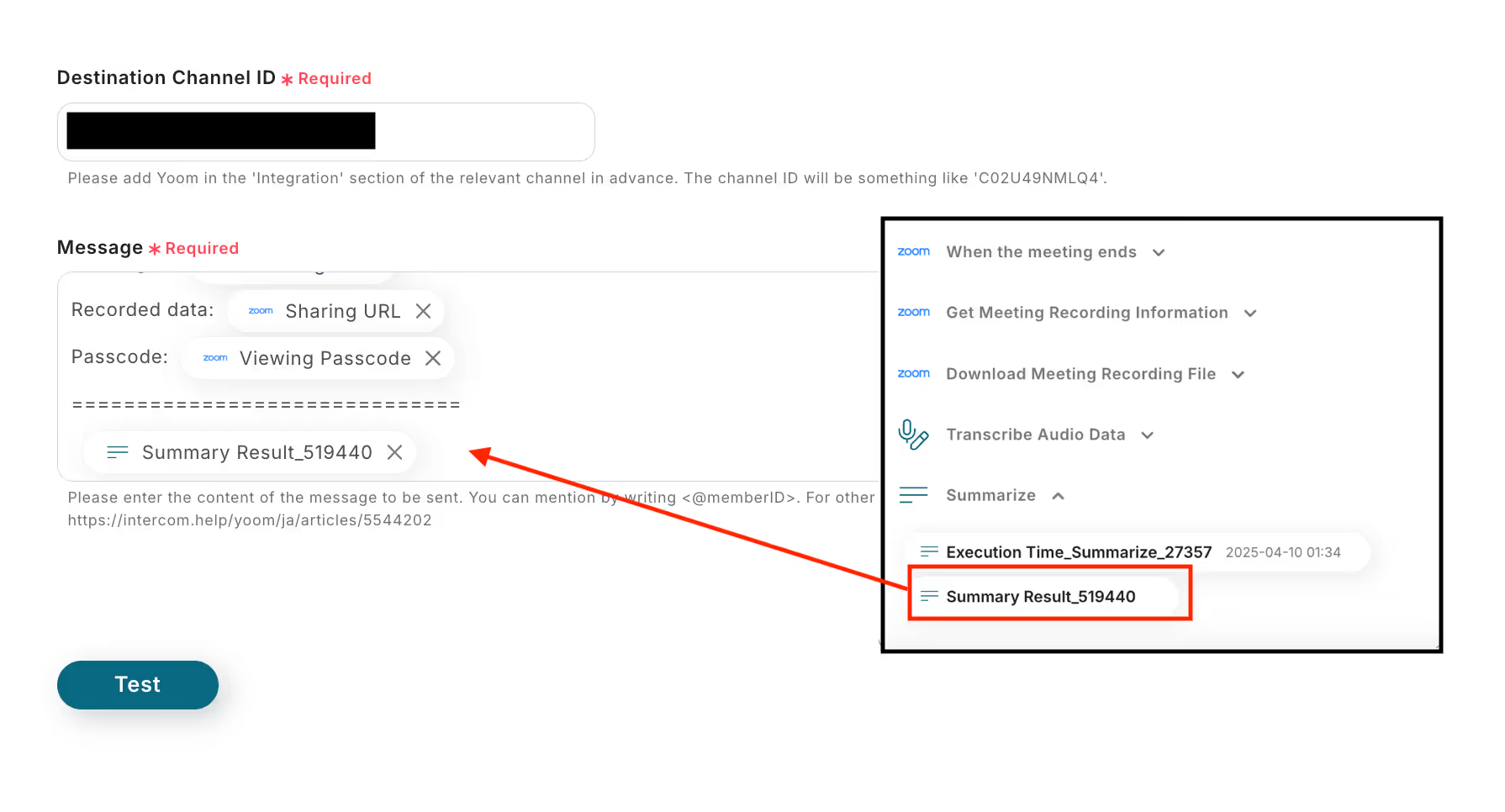
→ Click Test → Success
→ Click Save
Step 9 Turn the App Trigger [ON]
Once all processes are configured, a complete screen will pop up.
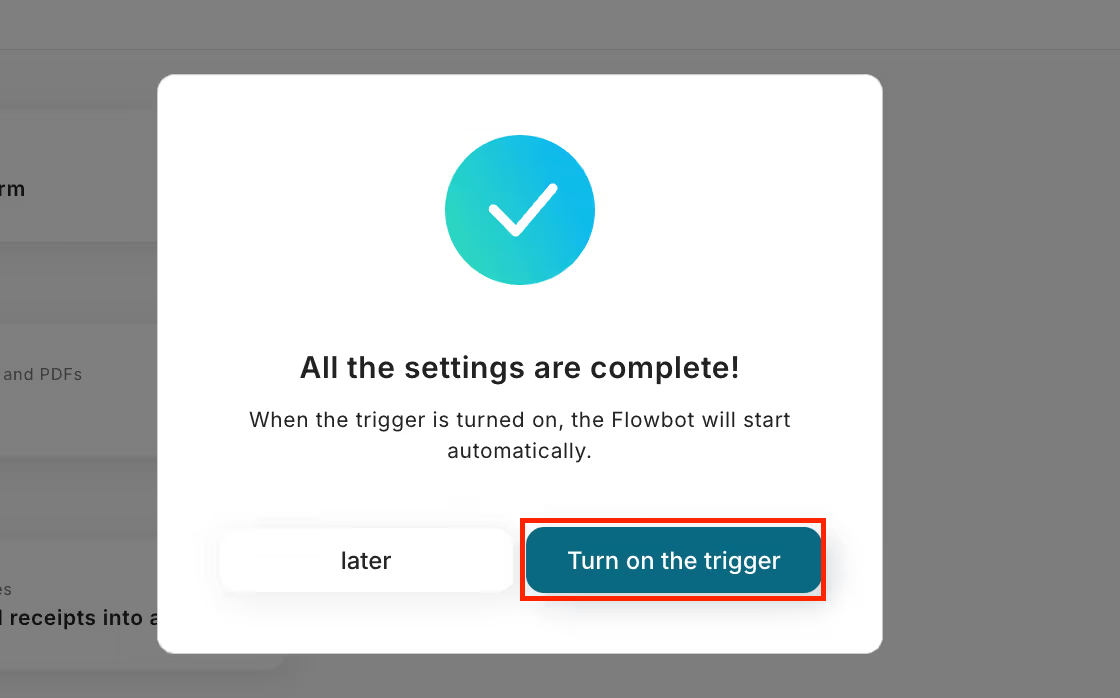
Turn the Trigger [ON] to activate the flow bot.
<span class="mark-yellow">Automation was achieved in a short time without using programming.</span> Here is the template used this time.






















.avif)

.avif)
.avif)






